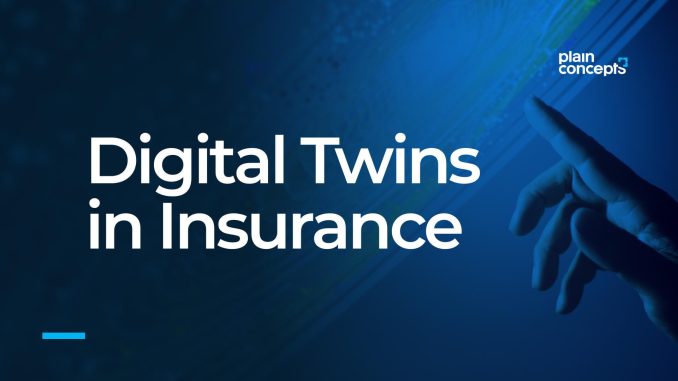
Digital twins, once a niche concept in engineering, have rapidly evolved into a powerful tool across industries. At their core, digital twins are virtual replicas of physical assets, systems, or processes, continuously updated with real-time data. They allow businesses to simulate scenarios, predict outcomes, and optimize performance without exposing the actual asset to risk. As this technology gains traction, the insurance industry is beginning to recognize its transformative potential, both in how risks are assessed and how policies are designed.
Insurance has traditionally relied on historical data and statistical models to evaluate risk. While effective, these methods often struggle to capture the complexity of modern systems, especially in industries like manufacturing, energy, and healthcare. Digital twins offer a new dimension by providing dynamic, real-time insights into how assets behave under different conditions. For insurers, this means moving beyond static assumptions and toward a more precise understanding of risk exposure. A factory equipped with digital twins for its machinery, for instance, can provide insurers with detailed performance data, enabling more accurate underwriting and potentially lower premiums.
The predictive capabilities of digital twins are particularly valuable in risk prevention. By simulating potential failures or disruptions, businesses can take proactive measures to avoid costly incidents. Insurers benefit from this because fewer claims mean reduced losses. In fact, some insurers are beginning to incentivize the use of digital twins by offering discounts or specialized coverage to companies that adopt them. This creates a virtuous cycle where technology reduces risk, insurers reward proactive behavior, and businesses gain both financial and operational resilience.
Claims management is another area where digital twins are making an impact. Traditionally, disputes over the cause or extent of damage could delay settlements and strain relationships between insurers and policyholders. With digital twins, insurers can access detailed records of how an asset was performing before, during, and after an incident. This transparency accelerates claims resolution, reduces friction, and enhances trust. For policyholders, it means faster payouts and greater confidence that their insurer is working with accurate information rather than assumptions.
The rise of digital twins also opens the door to more personalized insurance products. Instead of offering broad coverage based on industry averages, insurers can tailor policies to the specific conditions of each client. A logistics company using digital twins to monitor its fleet, for example, might receive coverage that reflects the actual wear and tear of its vehicles rather than generic risk categories. This level of customization aligns with broader trends in insurance, where personalization and flexibility are becoming key differentiators in a competitive market.
Cybersecurity, however, adds complexity to the equation. Digital twins rely on continuous data exchange, often across multiple platforms and networks. This creates potential vulnerabilities that insurers must account for. Coverage for digital twin systems may need to include protection against cyberattacks, data breaches, or system failures. Insurers are expanding their expertise in this area, recognizing that the value of digital twins depends on the integrity and security of the data they generate. Balancing innovation with protection will be critical as adoption grows.
The integration of digital twins into insurance also reflects a broader cultural shift toward collaboration. Insurers are no longer just financial backstops; they are becoming partners in risk management. By working closely with businesses to analyze digital twin data, insurers can provide insights that go beyond coverage. They can help identify vulnerabilities, suggest preventive measures, and even support strategic decision-making. This partnership model strengthens relationships and positions insurers as active contributors to business success rather than passive responders to loss.
Regulation will play an important role in shaping this evolution. As digital twins become more widespread, regulators will need to establish standards for data accuracy, privacy, and accountability. Insurers must navigate these frameworks carefully, ensuring that their products comply while still delivering value. At the same time, regulation can provide clarity and confidence, encouraging more businesses to adopt digital twins and integrate them into their risk management strategies.
The global nature of digital twins adds another layer of complexity. Multinational companies may deploy digital twins across different regions, each with its own regulatory environment and risk profile. Insurers must design policies that account for these variations, ensuring consistent coverage while adapting to local conditions. This challenge underscores the importance of agility in the insurance industry, as companies increasingly operate in interconnected, data-driven ecosystems.
Looking ahead, the potential of digital twins in insurance is vast. As technology advances, digital twins will become more sophisticated, incorporating artificial intelligence and machine learning to enhance predictive capabilities. Insurers will be able to simulate not just individual assets but entire systems, from supply chains to urban infrastructure. This holistic view of risk will enable more comprehensive coverage and more effective prevention strategies, reshaping the very foundations of insurance.
The rise of digital twins also highlights the importance of trust. Policyholders must feel confident that sharing data with insurers will lead to fair outcomes and not expose them to unnecessary risks. Insurers, in turn, must demonstrate transparency in how they use digital twin data, ensuring that it benefits clients rather than simply serving as a tool for risk avoidance. Building this trust will be essential to unlocking the full potential of digital twins in insurance.
Ultimately, digital twins represent a convergence of technology and risk management that is redefining the insurance industry. They offer unprecedented visibility into how assets perform, enabling insurers to move from reactive models to proactive partnerships. By embracing this technology, insurers can deliver more accurate coverage, faster claims resolution, and greater value to their clients. For businesses, the integration of digital twins into insurance provides not only financial protection but also a pathway to resilience and innovation. As adoption grows, the relationship between insurance and digital twins will become a cornerstone of modern risk management, shaping the future of both industries.